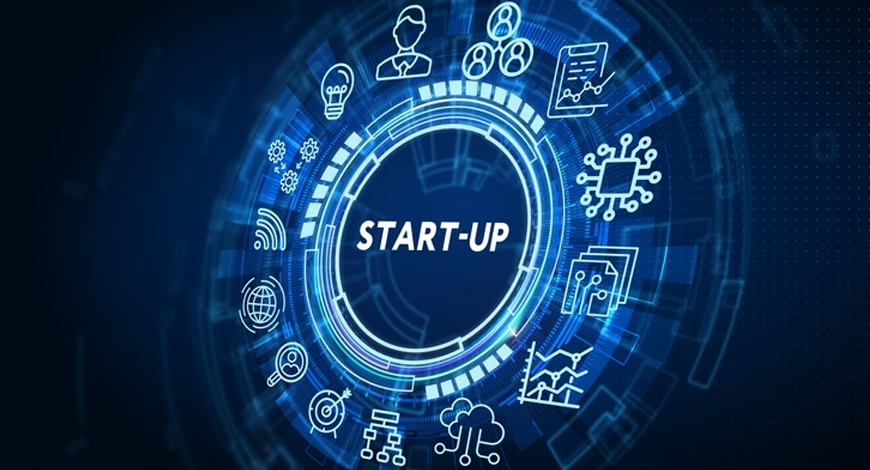Strategic Role of Enterprise Software in Digital Transformation
In today’s rapidly changing business environment, digital transformation is not just an option but a strategic imperative to gain competitive advantage. In this context, enterprise software solutions, which occupy a central place in organizations’ technology roadmaps, serve a range of important functions such as modernizing business processes, enabling data-driven decision-making, fostering agile operations and building secure infrastructures. In this article, we will examine the strategic role of enterprise software in digital transformation from architectures to security and measurement metrics.
For many organizations, software platforms such as enterprise resource planning (ERP), customer relationship management (CRM) and human capital management (HCM) form the foundational pillars of the digital transformation process. These systems are vitally important not only as individual modules but as ecosystem components that can integrate with each other, be adaptive to change and scale accordingly. In this context, software solutions become a strategic tool — not just a technology investment, but a catalyst supporting the business model transformation.
Strategic Value
Investments in enterprise software create strategic value under the following main headings:
- Automation and optimization of business processes — for example digitizing Order to Cash (O2C), Procure to Pay (P2P) or Sales & Operations Planning / Material Requirements Planning (S&OP/MRP) flows.
- Supporting data-centric decision-making mechanisms — setting up real-time BI and strong data governance infrastructure together with Big Data and analytics tools.
- Accelerating innovation cycles through an agile and scalable technology infrastructure — for example microservices, API-first approaches.
- Delivering innovative customer experiences — integrating CRM platforms with mobile and social channels, managing customer journey maps digitally.
- Protecting reputation through risk management, compliance and security — especially within the scope of PII masking and regulations such as GDPR.
In these areas, enterprise software stands out not just as a support system but as a guiding element.
Software Architectures
Modern enterprise software architectures are critical components for digital transformation success. The main approaches are as follows:
API-First Integration (REST, GraphQL)
Today, REST and GraphQL are widely used API technologies for system-to-system integration. With this approach, real-time and flexible data exchange is enabled between legacy systems and new applications. Additionally, practical measures such as API gateway, throttling and versioning improve manageability and security.
iPaaS / ESB Solutions
Organizations adopt iPaaS (Integration Platform as a Service) or ESB (Enterprise Service Bus) solutions to run different systems together. These architectures reduce the burden of integration while providing centralized control, service standardization and observability.
ETL/ELT and Data Warehouse
ETL (Extract-Transform-Load) or ELT (Extract-Load-Transform) processes have become mandatory for data analytics and decision-support systems. Data warehouse setups cover the steps of cleaning, transforming and modeling data. This enables KPI and ROI-oriented reporting.
Event-Driven Architecture
Event-driven architecture comes to the fore for real-time workflows and micro-interactions. For example when an order is created, related services are triggered asynchronously; this structure reduces latency and increases system scalability.
Security & Compliance
The process of enterprise software transformation involves security and compliance as critical factors. The following headings are key elements to consider:
- Ensuring access control using authorization models such as RBAC/ABAC.
- Integrating multi-factor authentication (MFA) and identity management solutions such as OAuth 2.0.
- Protecting critical data (e.g., PII) with masking, encryption and secure disposal mechanisms.
- Observing data compliance with regulations such as GDPR, KVKK and conducting regular audits.
- Establishing incident response plans and cyber-attack reaction procedures.
Performance & Observability
For an application to succeed, functionality alone is not sufficient; the system’s performance management and observability must also be ensured:
- Monitoring metrics such as TTFB (Time to First Byte) and TTI (Time to Interactive).
- Using application performance monitoring (APM) and log management solutions to assess the real-time health of the system.
- Ensuring adherence to Service Level Agreement (SLA) targets and timely reporting.
- Conducting scalability tests, load tests and stress tests periodically.
Real-World Scenarios
Below are two scenarios where enterprise software is effectively used in digital transformation:
- Manufacturing company: The company digitized S&OP flows using an ERP system and integrated production, inventory and sales data via ETL processes to create real-time decision support.
- Retail chain: Using CRM and event-driven architecture, the company integrated in-store movement and e-commerce data of customers, and delivered personalized campaigns via a mobile app.
KPI & ROI
KPIs and ROI are vital for measuring the success of digital transformation projects. Key metrics include:
- Reduction in operational costs (e.g., time savings, fewer manual processes).
- Shortening of order-to-cash (O2C) cycle time.
- Reduction in IT system downtime.
- Acceleration of time-to-market for new products or services.
- User satisfaction and employee productivity — measurable via surveys or KPI indicators.
- Payback period of software investments and total gains (e.g., achieving ROI within %X of time).
Best Practices
For enterprise software projects to succeed, the following best practices should be considered:
- Adopting agile methodologies and a DevOps culture.
- Using the MVP (Minimum Viable Product) approach for rapid prototyping and incremental growth.
- Ensuring system is change-ready through modular architectures and API-first strategy.
- Planning change management and user training processes thoroughly.
- Ensuring data governance, quality control and reliable analytics infrastructure.
Checklist
The following checklist outlines the fundamental steps and risk areas for a corporate software project:
- Clearly defining business goals and aligning them with the digital transformation strategy.
- Taking inventory of existing systems and determining integration needs.
- Selecting the appropriate architectural model (API, iPaaS/ESB, ETL/ELT, event-driven).
- Addressing security and compliance requirements at an early stage.
- Defining performance and observability metrics and preparing monitoring mechanisms.
- Setting KPI and ROI targets and preparing a regular reporting plan.
- Executing user acceptance, training programs and change management strategy.
- Running the project in small steps (MVP) and institutionalizing continuous improvement cycle.
In summary, enterprise software solutions’ strategic role in digital transformation encompasses not only technological investment but also the restructuring of business models and organizational capabilities. With the right architecture, secure infrastructure, measurable performance and user-centric approaches, organizations can achieve sustainable success in their transformation journeys.
-
 Gürkan Türkaslan
Gürkan Türkaslan
- 12 November 2025, 12:19:10
 English
English



